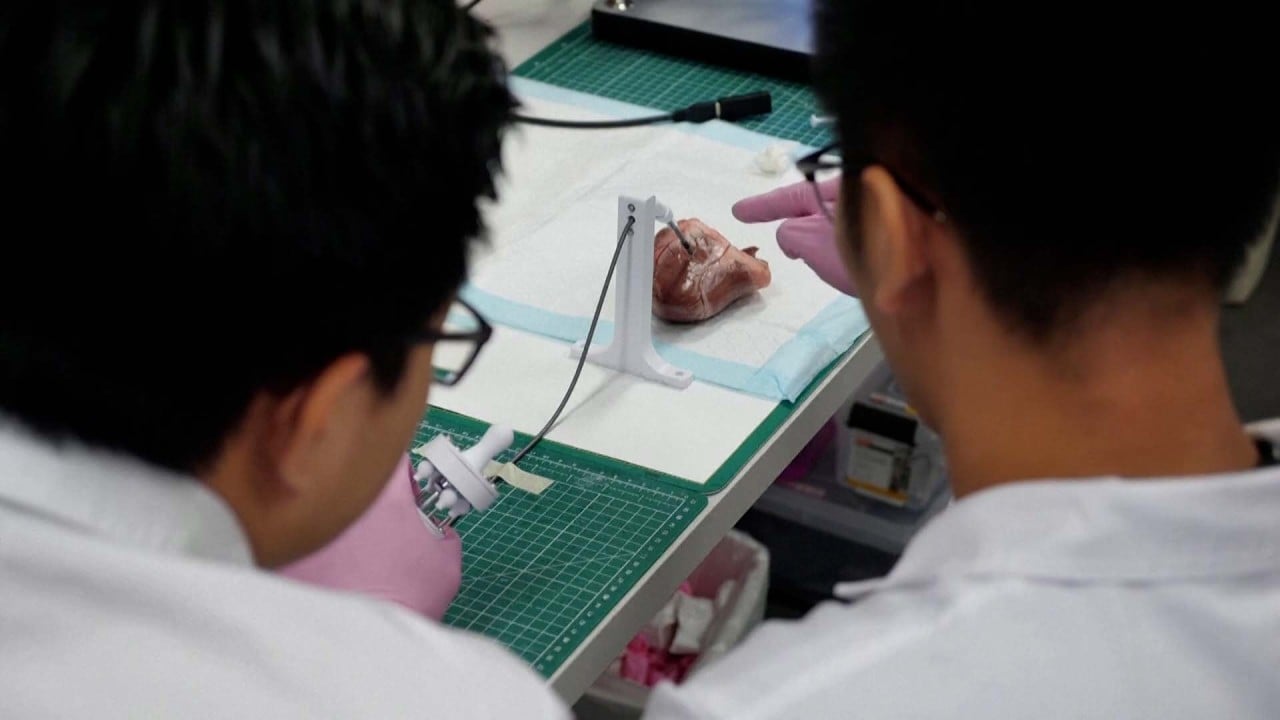The Chinese Academy of Sciences (CAS) hailed the achievement – described in a study published by the journal Nature on Wednesday – as a „significant breakthrough” in materials science.
The research is a collaboration between Zhang Zhenjun and Zhang Zefeng of the CAS Institute of Metal Research at the Shenyang National Laboratory for Metal Science and Robert Ritchie of the University of California, Berkeley.
According to the peer-reviewed paper, the study was conceived in China and the sample materials were prepared there. Ritchie participated in the review process for the manuscript.
3D printing – also known as additive manufacturing (AM) – has revolutionized manufacturing, a process that has limited use for creating components that require high levels of fatigue tolerance.
Chinese scientists have developed a state-of-the-art technology for 3D ceramic printing in air
Chinese scientists have developed a state-of-the-art technology for 3D ceramic printing in air
Metal 3D printing uses lasers to melt metal powder and deposit specific, complex shapes.
However, the high heat generated by the powerful laser beams commonly used in printing leads to the formation of gas pores within the parts, compromising the performance of the composite.
These microvoids act as focal points of stress concentration, initiating early cracks and facilitating their propagation, thus reducing the fatigue life of the material.
To address this, researchers set out to create a titanium alloy that does not contain pores. They developed a process using Ti-6Al-4V, a titanium-aluminum-vanadium alloy that achieved the highest fatigue tolerance of all titanium alloys to date.
„Our theory posits that printed alloys under the right conditions should exhibit excellent fatigue performance,” Zhang Zhenjun told the South China Morning Post.
„Achieving this objective seemed straightforward at first glance. However, the simplicity of the task is disappointing. The techniques currently used to remove gas pores often result in internal structure of the composite,” he said.
„Addressing this problem without reintroducing pinholes or other adverse effects is challenging. We have developed a new technique called Net-AM processing that prints at high temperatures.
According to Zhang, the process begins with hot isostatic pressing to remove gas pores, followed by rapid cooling before any change in the internal structure of the mixture.
Using this process, a pore-free alloy was obtained with a 106 percent improvement in tensile fatigue strength from 475 MPa to 978 MPa—a world record.
„This achievement holds great promise for industries that demand lightweight materials, such as aerospace and new energy vehicles,” Zhang said.
How 3D printing is helping to bring a century-old village back to life in rural China
How 3D printing is helping to bring a century-old village back to life in rural China
So far, the material has only been produced at a prototype scale, in the form of a dumbbell with a thin section measuring 3 mm (about 0.118 in), which is too small for most real-life applications.
Although the technology is still in the experimental stage, Zhang says it already has great application prospects.
„Thick sections face heat transfer limitations during processing. Nevertheless, this improvement is sufficient to enable the fabrication of many thin, complex devices,” he said.
According to the CAS website, several aircraft parts — including NASA's rocket nozzles, the support frames of China's J-20 fighter jet and the fuel nozzles of the Chinese C919 aircraft — have been created using 3D printing technology.
With future scale-ups, the technology may be ready for widespread industrial use, but whether its development will attract international cooperation remains to be seen.
Cooperation between China and the US is rare once a technology is developed enough to be used for very specific military or aerospace applications.
In addition to the team's achievement, „this study also inspires some new research directions for current AM technology,” Zhang said.
The observation that void-free AM microstructures have exceptionally high fatigue resistance should be extended not only to Ti alloys but also to other metallic material systems.

„Oddany rozwiązywacz problemów. Przyjazny hipsterom praktykant bekonu. Miłośnik kawy. Nieuleczalny introwertyk. Student.


